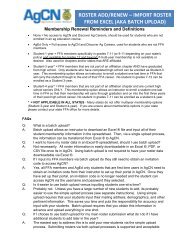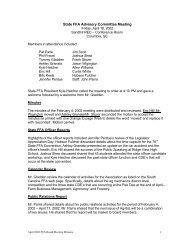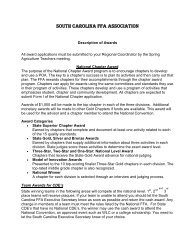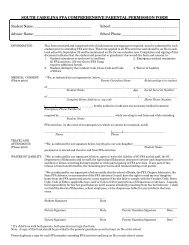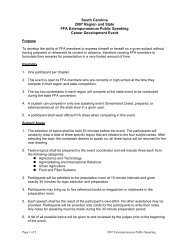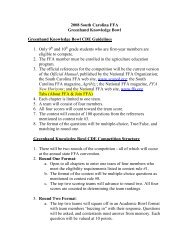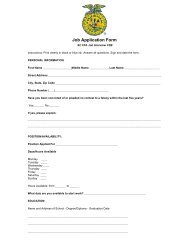DHI-202 Herd Summary
DHI-202 Herd Summary
DHI-202 Herd Summary
Create successful ePaper yourself
Turn your PDF publications into a flip-book with our unique Google optimized e-Paper software.
14<br />
7. Stage of Lactation Profile<br />
7. Stage of Lactation Profile divides 7<br />
the milking herd into five groups based<br />
on days in milk for the current lactation:<br />
40 days or less, 41 to 100 days, 101 to<br />
199 days, 200 to 305 days, and 306 days<br />
and greater. First lactation cows, second<br />
lactation cows and third and later<br />
lactation cows are summarized separately<br />
within each stage of lactation group.<br />
Number of Milking cows, Average Daily<br />
Milk Production, % Fat, % Protein,<br />
Average SCC Score or Weighted Actual<br />
SCC and SCC Scores > 3.9 or 200,000<br />
are listed for each group.<br />
Milk production trends across stage<br />
of lactation can indicate if the herd is<br />
following a normal lactation curve. Milk<br />
production should peak in the second<br />
stage of lactation (41-100 days) with a<br />
gradual decline as days in milk increase.<br />
Production by stage of lactation can<br />
be compared with similar values from<br />
previous <strong>DHI</strong>-<strong>202</strong> <strong>Herd</strong> Summaries. The<br />
effects of changes in management<br />
conditions (such as change in the feeding<br />
program) can be determined from these<br />
comparisons. The number of cows in each stage of lactation group should be considered. A small<br />
number of cows may yield an unrepresentative average.<br />
% Fat and % Prot are listed together to allow comparisons between the two components. Nutrition<br />
will have a high influence on these values, and an abnormal inversion may indicate a metabolic disorder.<br />
Producers should consult their veterinarian or nutritionist when a high degree of abnormal inversions<br />
exist or if any values are abnormally low.<br />
Average SCC Score or Weighted Actual SCC and SCCS > 3.9 or 200,000 by stage of lactation can<br />
help you monitor somatic cell count across stage of lactation. Increases in the somatic cell count are<br />
associated with decreases in milk production. For each 1 unit increase in SCC Score, daily production<br />
per cow is expected to decrease by 0.8 lb. for first lactation cows and 1.4 lb. for second and later<br />
lactation cows.<br />
Mastitis control can be partially evaluated with the data in this section of the summary and this<br />
information should be used in conjunction with the monthly somatic cell count report for the herd. There<br />
are several trends to watch for such as the pattern of counts, are high counts found in early or late<br />
lactation, or whether there is no pattern at all. The number and percent of cows over 3.9 or 200,000 does<br />
not necessarily represent new infections in the herd.<br />
First lactation cows should have lower SCC scores than older cows. Lowest SCC scores generally<br />
will be found early in lactation. High SCC scores after calving may be caused by ineffective dry cow<br />
therapy and/or poor environmental conditions in the maternity area. Increases in SCC score can be due<br />
to faulty milking equipment, improper milking techniques and/or poor environmental conditions.



